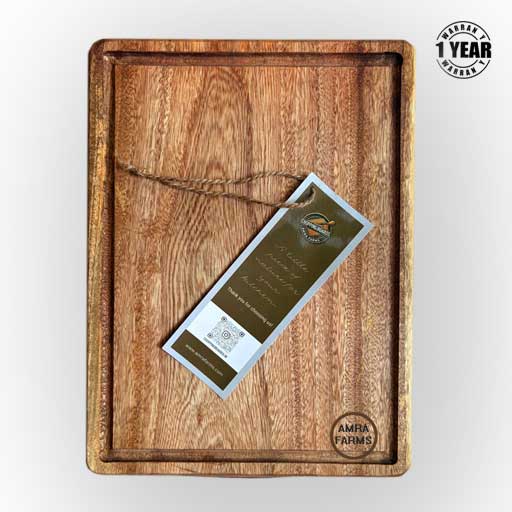Your cart is currently empty!
Get
20% OFF
On Mango Wood Chopping Boards

Blog
Wooden chopping boards that naturally resist fungus/mould growth
Purchasing a wooden chopping board goes beyond aesthetics and durability. When considering a chopping board, most of us overlook common factors including toxicity, food safety, and performance. As a home cook, we understand the importance of a chopping board, but when it comes to purchase decisions we end up buying something based on our budget.…
The Right Way to Oil Your Wooden Cutting Board: One Side or Both?
A wooden chopping board is an investment to most people who own it. They are more a piece of art for your kitchen than a utility or an accessory for just chopping. It’s a personality in itself. Maintaining a wooden chopping board is part of the whole process of owning a wooden cutting board. A…
7 Easy tips to maintain your wooden cutting board to make it last longer
7 Easy tips to maintain your wooden cutting board to make it last longerA wooden cutting board is a timeless kitchen tool known for its durability, natural beauty and knife friendliness. A hardwood chopping board made from Teak, Tamarind, mango wood or neem will last decades if cared for well and if you ensure that…
DIY Wooden Cutting Board Cleaning Spray – Make them at home to increase your board’s life
Wooden cutting boards are prone to a common problem which affects not only the looks and the beauty of the board but also the hygiene of the cutting board. Mold, fungus, or black spots. These are very common in wood that is not dense and usually light. These wooden boards that are not dense require…
How to Fix Scratches and Scuff Marks on Your Wooden Cutting Board
Wooden cutting boards are very common in the kitchen. They serve you for years. They outlive most other boards like plastic and bamboo, working perfectly well and looking as good as new for decades. Some wooden chopping boards like teak wood chopping boards are known to be used for decades if used well. All you…
The Pros and Cons of Having a Juice Groove in Your Cutting Board
A juice groove is a functional design element that stops liquid from flowing onto your countertop. It’s a very small design but highly functional. This may sometimes affect the aesthetics of your board, but it saves you time cleaning your countertop over the course of using the board. That said, juice grooves have their downside…
The Ultimate Guide to Care and Maintenance for Teak Wood Chopping Boards: How to Clean, Oil, and Protect Your Wooden Cutting Board for Long-Lasting Use
Teak wood is known for its beauty and durability. Their exceptional durability makes it a perfect material for chopping boards. When you purchase a wooden chopping board, you would want to keep the board in good condition and in its original shape. Unfortunately, over time, your wooden chopping board will lose its lustre and charm.…
What types of Oils are safe to use on your cutting board
Wooden cutting board oiling goes under a lot of debate. When to oil your board, how to oil it, and what oil to use are common discussions. To safely maintain and extend the lifespan of your wooden chopping board, oil your board with food-safe mineral oil or coconut oil that is resistant to rancidity. The…
How to Disinfect & Deep Clean Your Wooden Chopping Board (The Right Way!)
A chopping board is one of the few accessories in the kitchen that goes through rigorous tests. Being a tool that is used every single day, and multiple times often, the chopping board goes through cuts, chops, and tears every single day. Being an accessory that is used regularly, it is only natural that we…





